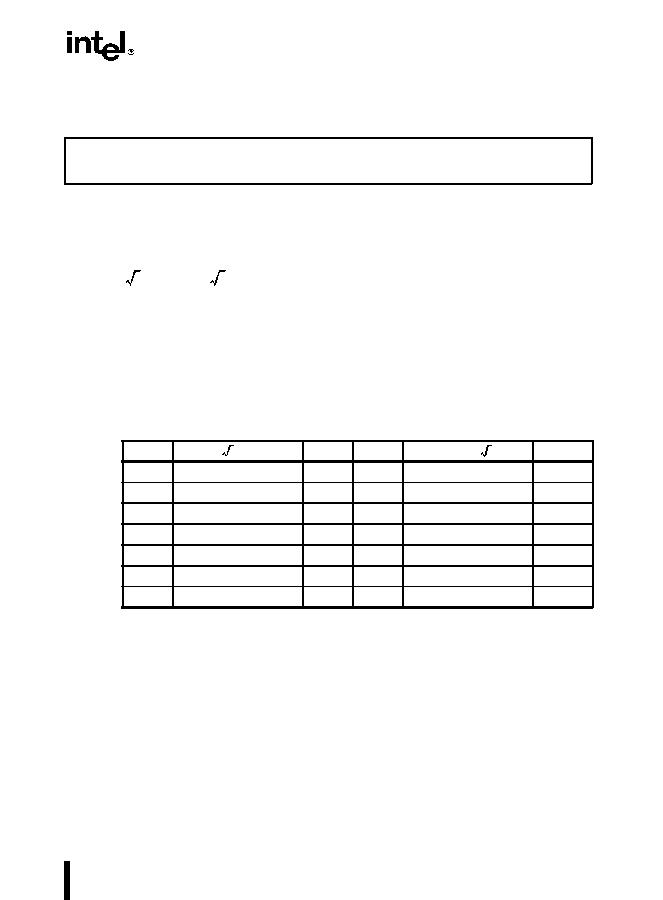3-289
INSTRUCTION SET REFERENCE
FYL2XP1Compute y
?
log
2
(x +1)
Description
This instruction calculates the log epsilon (ST(1)
?
log
2
(ST(0) + 1.0)), stores the result in register
ST(1), and pops the FPU register stack. The source operand in ST(0) must be in the range:
The source operand in ST(1) can range from
??
to
+?
. If the ST(0) operand is outside of its
acceptable range, the result is undefined and software should not rely on an exception being
generated. Under some circumstances exceptions may be generated when ST(0) is out of range,
but this behavior is implementation specific and not guaranteed.
The following table shows the results obtained when taking the log epsilon of various classes of
numbers, assuming that underflow does not occur.
NOTES:
FMeans finite-real number.
*Indicates floating-point invalid operation (#IA) exception.
This instruction provides optimal accuracy for values of epsilon [the value in register ST(0)] that
are close to 0. When the epsilon value (
?
) is small, more significant digits can be retained by
using the FYL2XP1 instruction than by using (
?
+1) as an argument to the FYL2X instruction.
The (
?
+1) expression is commonly found in compound interest and annuity calculations. The
result can be simply converted into a value in another logarithm base by including a scale factor
in the ST(1) source operand. The following equation is used to calculate the scale factor for a
particular logarithm base, where n is the logarithm base desired for the result of the FYL2XP1
instruction: scale factor = log
n
2
Opcode
Instruction
Description
D9 F9
FYL2XP1
Replace ST(1) with ST(1)
?
log
2
(ST(0) + 1.0) and pop the
register stack
ST(0)
?
(1
? (
)) to
?
0
?
0
+
0+0 to +(1
?
())NaN
??
+
?
**
??
NaN
ST(1)
?
F
+F
+0
?
0
?
F
NaN
?
0
+0
+0
?
0
?
0
NaN
+
0
?
0
?
0+0
+0
NaN
+
F
?
F
?
0+0
+F
NaN
+
?
??
**
+
?
NaN
NaN
NaN
NaNNaN
NaN
NaN
122
?
(
))
to122
?
(
)
22
?
22
?

